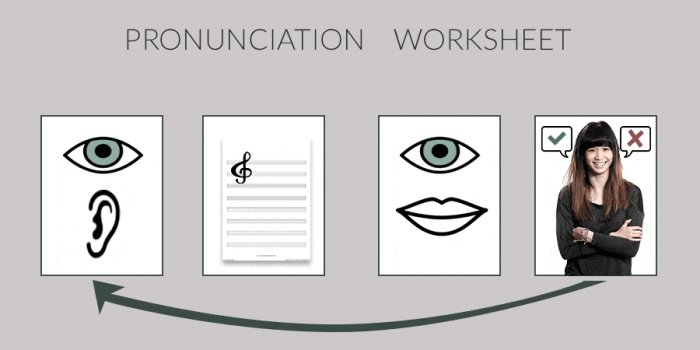Help

Written by Luca Lampariello.
“There must be another way,” I told myself, discouraged.
I had spent what seemed like countless hours listening and re-listening to a German language audio track, trying to imitate it as closely as possible.
By listening attentively, and marking up the text, I was able to develop an intuitive visual system for decoding the phonetic patterns of any language.
These pitch changes are a key part of human communication. In many languages, they can distinguish a question from a statement, a happy statement from an angry one, and the speech of a native from the speech of a foreigner.
Why, then, is it so rarely covered in language learning courses and texts?
To learn sounds, we have romanization and the
Today, I want to teach you the basics of that system, so you can use it in your own learning.
Ready? Let's get started.
Preparing yourself
I recommend studying intonation as part of listening and reading, one of the key and most effective activities for acquiring a great accent in any language.
- A printed copy of a text or dialogue in your target language.
- Audio of that text or dialogue, as spoken by one or more native speakers.
- A means to play that audio (usually your computer, smartphone, or mp3 player)
- A pencil, for marking the text.
Step 1: Listen to Each Sentence Twice
Let's imagine that you're learning English, and you've chosen to practice the intonation of a given text.
Your task here is easy:
Just read and listen to the entire text twice.
That means pressing play on the audio and following along, reading the words with your eyes as you hear the native speaker reading the words out loud.
I can remember going 'trick or treating' as a child and using a pillow case as my goodie bag. This ensured that I would have plenty of room for the ridiculous amounts of chocolate that I collected. I remember having many stomach aches in the week that followed Halloween. I probably had enough candy to last a month, but I ate it all within a few days. Some parents take their children's candy and will only allow them a certain amount each day. However, my mom wanted to get it over with. She thought it was better to let me eat it all at once than to have to listen to me whine about candy for a whole month.
You might have the impression that Halloween is just for kids, but you would be wrong. Many adults take part in the festivities as well. For example, there are many parties that take place all over the city. Most people dress up in costumes and often there are prizes given for the best ones. Some adults spend months, and a lot of money, coming up with unique and elaborate costumes. I believe that some adults have more fun on Halloween than most children do.
Furthermore, many adults and teenagers like to set off fireworks and firecrackers. There are often wonderful firework displays at parks and schools. Usually they are put on by firefighters to make sure that nobody gets hurt. October 31 is generally not a peaceful night, so if you think you will be going to bed early, you had better think again. Often there are teenagers setting off firecrackers until all hours of the morning."
While listening and reading, make sure you are seated comfortably, with the text laid out in front of you. The position of your body can impact how you focus and absorb information, so try to sit up while reading, with your back straight.
Do this at least two or three times before moving on.
Step 2: Divide Each Sentence Into Chunks
When sentences are spoken aloud naturally, they often contain a number of pauses, where the speaker stops for a moment before continuing on.
Using these pauses as natural breakpoints, we can divide sentences into "chunks", or smaller pieces.
This simple addition allows your brain to break down complex sentences into shorter, more easily digestible pieces of information.To help me visualize the pauses, personally like to draw slashes where each pause appears in the text. This simple step helps the resulting chunks stand out visually, and it makes them more obvious while reading.
"October 31 // is a night for fun and fright. Children of all ages // dress up in costumes. There are little girls // who dress up as fairies //, princesses //, ballerinas // and the like.
There are little boys// who dress up as firefighters //, policemen // and superheroes. You also have the children //who dress up as furry animals // or ghoulish ghosts. One thing is certain,// no matter what costume you choose,// there is sure to be a lot of candy and chocolate // involved on Halloween. "
Step 3: Listen Again, and Mark Variations in Tone

With your text marked and divided into chunks, it will now be easier to identify where important intonation changes happen. This is because each chunk of language will usually end with a change in pitch, either from a low tone to a high tone, or a high tone to a low tone.
If you have trouble hearing the pitch changes, you may want to keep your hand on the pause button and listen to each chunk multiple times. Once you're sure how the pitch changes, you can then write your arrows on the printed page.
- "October 31 ⤴// is a night for fun and fright ⤵. Children of all ages ⤴// dress up in co ⤵-stumes. There are little girls ⤴// who dress up as fairies ⤴//, princesses ⤴//, ballerinas ⤴//and the li- ⤵ke. There are little boys ⤴// who dress up as firefighters ⤴//, policemen ⤴// and super ⤵heroes. You also have the children ⤴// who dress up as furry animals ⤴// or ghoulish ghosts ⤵. One thing is cer ⤵-tain//, no matter what costume you choose ⤴//, there is sure to be a lot of candy and chocolate ⤴// involved on Hal-lo-ween ⤵. "
-
Time to Get a Great Accent
Once you have completed all three of the above steps, you will have a reliable record of the way a native speaker would intone a text while reading.
- Where they'll pause (for emphasis, breathing, etc.)
- Where they'll raise the pitch of their voice
- Where they'll lower the pitch of their voice.
Once you have your "sheet music", don't let it go to waste. Read it, refine it, shadow it, and practice it, as much as you can. And of course, get feedback, if possible. Use your final text as a refining tool that will get you closer and closer to native-like intonation and pronunciation.
- FAQ Author: vincent
 April 2019
April 2019
Related topics:
- How to Set Better Language Learning Goals
- How to Practice Active Listening Effectively
- How to prepare for the TOEFL exam?
- When and how to learn grammar while studying a language
Comments
 2
All
2
All














































